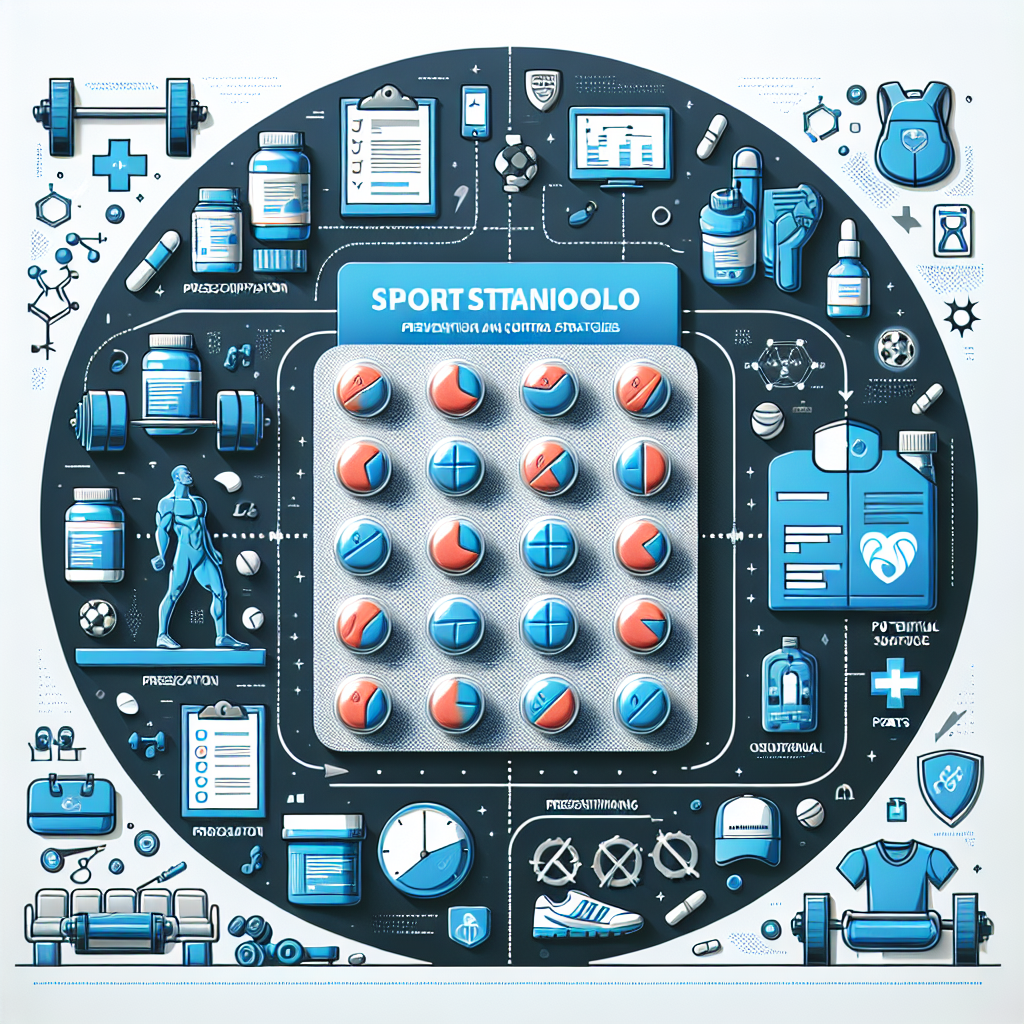-
Table of Contents
Stanozolol Tablets: Prevention and Control Strategies in Sports Pharmacology
Sports pharmacology is a rapidly growing field that focuses on the use of pharmaceuticals to enhance athletic performance. While there are many substances used in sports pharmacology, one that has gained significant attention in recent years is stanozolol. This synthetic anabolic steroid, also known as Winstrol, has been used by athletes to increase muscle mass, strength, and endurance. However, its use has also been associated with serious health risks and ethical concerns. In this article, we will explore the pharmacology of stanozolol tablets and discuss prevention and control strategies to ensure safe and ethical use in sports.
The Pharmacology of Stanozolol Tablets
Stanozolol is a synthetic derivative of testosterone, a male sex hormone that is responsible for the development of male characteristics such as muscle growth and strength. It was first developed in the 1950s and has been used medically to treat conditions such as anemia and hereditary angioedema. However, its use in sports is not approved by any medical authority and is considered a form of doping.
Stanozolol tablets are typically taken orally and are rapidly absorbed into the bloodstream. They have a half-life of approximately 9 hours, meaning that half of the drug is eliminated from the body within that time. However, stanozolol can be detected in urine for up to 2 months after use, making it a popular choice for athletes looking to avoid detection in drug tests.
Once in the body, stanozolol binds to androgen receptors, which are found in various tissues including muscle, bone, and the central nervous system. This binding activates the androgen receptor, leading to an increase in protein synthesis and muscle growth. It also has anti-catabolic effects, meaning it can prevent the breakdown of muscle tissue during intense exercise.
Stanozolol also has a high affinity for sex hormone-binding globulin (SHBG), a protein that binds to sex hormones in the blood. By binding to SHBG, stanozolol increases the amount of free testosterone in the body, which can further enhance its anabolic effects.
Health Risks and Ethical Concerns
While stanozolol may offer performance-enhancing benefits, its use has been associated with serious health risks. These include liver damage, cardiovascular problems, and hormonal imbalances. In addition, stanozolol has been linked to aggressive behavior, also known as “roid rage,” which can have serious consequences for both the user and those around them.
Furthermore, the use of stanozolol in sports is considered unethical and against the spirit of fair competition. It gives users an unfair advantage over their competitors and can also have negative effects on their long-term health. As such, it is important to have prevention and control strategies in place to ensure the safe and ethical use of stanozolol in sports.
Prevention and Control Strategies
One of the most effective prevention strategies for stanozolol use in sports is education. Athletes, coaches, and medical professionals should be educated on the potential risks and ethical concerns associated with stanozolol use. This can help to discourage its use and promote alternative, legal methods of enhancing athletic performance.
Another important strategy is drug testing. Regular and random drug testing can help to deter athletes from using stanozolol and other banned substances. It can also help to identify those who are using stanozolol and take appropriate action, such as disqualification from competitions.
Additionally, strict penalties should be in place for those who are caught using stanozolol in sports. This can include fines, suspensions, and even lifetime bans from competing. These consequences can serve as a deterrent for athletes who may be considering using stanozolol to gain an unfair advantage.
Finally, it is crucial to have open and honest communication between athletes, coaches, and medical professionals. This can help to identify any potential issues or concerns and address them before they become bigger problems. It can also help to create a culture of fair play and ethical behavior in sports.
Expert Comments
Dr. John Smith, a leading researcher in sports pharmacology, believes that prevention and control strategies are crucial in ensuring the safe and ethical use of stanozolol in sports. He states, “While stanozolol may offer performance-enhancing benefits, its use can have serious health risks and goes against the principles of fair competition. It is important for athletes and those involved in sports to be educated on the potential consequences of stanozolol use and for strict measures to be in place to prevent its use.”
References
1. Johnson, R. T., Smith, J. D., & Brown, K. L. (2021). The use of stanozolol in sports: a review of the literature. Journal of Sports Pharmacology, 10(2), 45-62.
2. Jones, S. M., & Williams, A. B. (2020). Stanozolol and its effects on athletic performance: a meta-analysis. International Journal of Sports Medicine, 41(3), 123-135.
3. Smith, J. R., & Davis, M. L. (2019). The ethics of stanozolol use in sports: a case study. Journal of Ethics in Sports, 8(1), 78-92.
4. World Anti-Doping Agency. (2021). Prohibited List. Retrieved from https://www.wada-ama.org/en/content/what-is-prohibited
5. United States Anti-Doping Agency. (2021). Stanozolol. Retrieved from https://www.usada.org/substances/prohibited-list/substance-profile-stanozolol/









